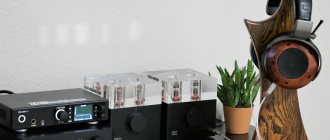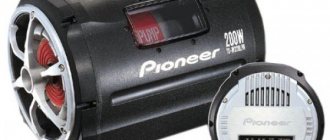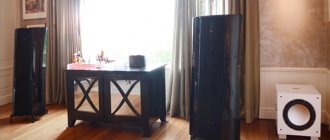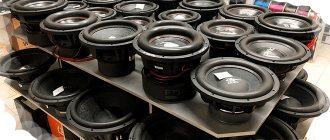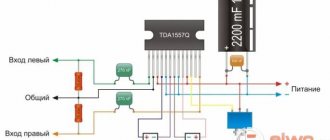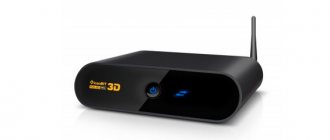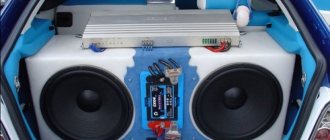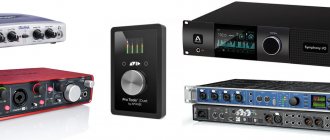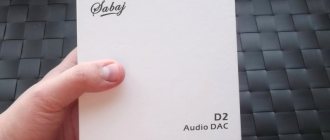We continue our review of current manufacturers of digital-to-analog converters. Someone is leaving the race and giving way to the young and toothy. Today in the arena Analog Devices, Saber and Asahi Kasei.
Start:
Single-bit and multi-bit (part 1)
Angel Heart (Part 2)
Analog Devices
Once the maker of the exquisite AD1862, the excellent 20-bit R-2R, Analog Devices has pivoted to more affordable all-in-one multimedia solutions. In particular, AD chips could be found in the previous generation of B&W Zeppelin Air (AD1936 + DSP ADAU1445). Analog Devices components are said to play up to their name - warmer and smoother, and less harsh than the competition.
Esoteric X-01D2 uses AD1955
Today, the company's product range includes only one model AD1955 with DSD support as a high-end chip. Among expensive devices, it could be found in the Esoteric X-01D2, and among cheap ones, in the Emotiva XDA-1 and Asus Essense 3 DACs.
Price from a batch of 1000 pieces: $6.86. Dynamic range 123 dB, distortion factor 110 dB.
Packaging and delivery
Celsus tried to keep everything in the spirit of a premium product, including the packaging; most likely, this is due to the Japanese market, where a high-quality box is a necessary condition for success. The very stylish outer cover features sophisticated printing with glossy inserts and silver embossing. Inside it contains a sliding box made of thick black cardboard. This box contains a convenient leather case with a magnetic flap. In this case, divided into two compartments, you will find the Companion One itself and a complete set of cables. The case is very convenient, it is ideal for a portable device that is supposed to be carried with you everywhere.
The next reason to take off our hat to the developers is the complete set of cables. In my memory, this is the first device that included all possible digital cables. With Celsus One you will receive a long MicroUSB cable for charging and connecting to a computer, as well as three short cables for mobile devices: Lightning, Apple 30 pin and USB-OTG for Android. It is very nice to get a device that is immediately ready for any use case; other manufacturers should take this into service.
Also included in the kit you will receive a protective glass for the back panel and everything necessary for gluing it. In addition, the kit includes two instructions in English (short and full) and a warranty card.
In general, on this point, Celsus One broke all records; in this parameter, no other device can even come close to it.
Saber
Let's talk about the youngest and most daring offspring among DACs. Although in fact this company has existed since 1984, it was previously better known in the computer multimedia market. The widespread audio hype happened at the turn of the 2010s. Unprecedented 8-channel chips with 32-bit calculus, DSD support and incredible characteristics have rolled out onto the market. Nowadays Saber “stones” can be found almost everywhere - from portables and Chinese DIY kits to professional high-end.
However, the merits of “Syabrov” to audiophile humanity are not absolute. A number of discerning listeners, including unfinished ones who still remember different R-2R multibits, voice their complaints. The main one is that with an off-scale resolution and pulse growth rate, the phonogram on Saber can lose cohesion and break up into bright patterns. So with not very successful Saber integration, “just listening to music” will be tiresome. Apparently, not all sonic richness can be described by a standard specification.
Flagship Saber ES9038PRO chip
There are now three current models in the top Saber audio line. ES9038PRO is a flagship chip with a programmable filter and a record 140 dB dynamic range. The younger ES9028PRO and ES9026PRO can do the same, but with a range of 128/124 dB and 120/110 dB distortion levels, respectively. Like their progenitors, these are all 8-channel processors that can be flexibly configured. Components with these three DACs have not yet been announced at the time of writing, since the Saber product range was updated at the beginning of 2016.
For portable audio, Saber offers DACs that feature features of the previous generation - ES9601C/K, 9602C/Q and 9018Q2C with support for DSD256 at 11.2 MHz. In this case, they received an upgrade in the form of built-in headphone amplifiers. The dynamic range is quite decent 122 and 121 dB with -102 dB distortion at 32 ohm headphone load.
Prices for the newest Saber lines are not yet known to ordinary customers, but for example, 9018Q2C is offered for $22, and the order quantity should not be less than 4 or more than 10 units.
Multibit vs Sigma – Delta vs NOS-DACs vs ES9018
Multibit / Sigma-Delta / NOS-DAC / Saber DACDisputes around this topic do not subside to this day, although DAC manufacturers decided everything long ago without us, and, in fact, pronounced a verdict on the multi-beaters. ES9018, in turn, threatens to sentence everyone else.
Both of them (theoretically) have nonlinear distortions below the threshold of hearing sensitivity. However, even an untrained listener notices the differences in sound!!!
The desire to understand this incident is the purpose of this article.
Shape analysis Multibit signal shape Difficulties of analog paths Myths and reality NOS - DACs Saber DAC ES9018 vs PCM1704U-K
As a starting point, I will give an excerpt from Irina Aldoshina’s book “Fundamentals of Psychoacoustics.” ...The sensitivity of hearing to temporal differences (waveform) and sound duration is extraordinary. Hearing sensitivity to frequency, intensity, and duration are related to each other. The hearing aid has an amazing differential ability to detect small differences between similar sounds in all respects: intensity, frequency, temporal structure and duration...
So, the first thing we should pay attention to is the accuracy of the transmission of FORM . Well, let's see what sigma - delta DACs offer us, let's look at them in order of improving their performance characteristics
For testing, a unique method of subtracting a “live” audio signal in real time was used. Despite all its obviousness, apparently, either no one used it or did not publish the results. So, here you have a completely unique material.
From the output current of the tested sigma-delta DAC, the reference current of the multibit (a selected instance of PCM1704UK, which has a guaranteed accuracy of 0.001%) was subtracted by hardware. The time delay was compensated in the sound editor (roughly), and then using the FPGA (precisely). The difference (representing the error in reproducing the waveform ) could not only be seen on an oscilloscope, but also heard.
It is interesting that for the CS 4398 (in my opinion, one of the most interesting sounding s/ds) the method turned out to be clearly redundant, its error was visible to the naked eye.
The difference between the envelope and the rectangular pulse is clearly visible. The authors used some completely “special” digital filter, with different “forward” and “backward” times.
below is the result of subtraction (error)
below is the shape at the output of the CS 4398 filtered by the digital low-pass filter of the oscilloscope (yellow) and the error filtered in the same way (blue)
The shape transmission error even at low frequencies is about 2%, however. despite such horror, the device has excellent THD (about -107 dB, which is 2 times better than any multi-beater)
Using an equalizer (in a sound editor), we were able to slightly reduce the amplitude of the error, which indicates the nonlinearity of the frequency response and phase response of the CS 4398. However, to the ear, the sound of the CS4398 is open, free, with only a slight coloration in the high frequencies.
with the AK4399 with a digital filter everything turned out to be much better. Symmetrical filter characteristic,
and an almost symmetrical error signal.
AK4399 showed a significantly smaller shape error, about 0.2%; all the energy of the error was in the HF region (above 5-7 kHz) and was perceived by ear as unnaturally hissing and “smeared” HF. The sound of the AK4399 to some extent gives that feeling of “emptiness” that should be present against the background of the thunder of instruments in premium-segment equipment. Plays loose classics, vocals, and non-aggressive acoustic instruments quite well. However, the lower register is sluggish, and the overall listening sensation is too smooth and calm, which is called “without emotions.” After a very short time, you begin to yearn for the clarity, sharpness and energy inherent in real sound. This is how the lack of HF resolution and sluggish attack manifest itself (apparently, the consequences of poor-quality digital filtering).
PCM 1794 The results of current subtraction will be obtained later, in the meantime, please familiarize yourself with the oscillograms and general considerations. Here and below, the multi-bit PCM1704 is drawn in yellow, the output of which is a 3rd order low-pass filter, and the sigma-delta PCM1794 is drawn in blue. PCM1704 included WITHOUT digital filter.
Design and management
The appearance of the DAC is also very good. Its appearance has something in common with Apple smartphones. The same aluminum frame and glass on both sides. According to the developer, this is real Gorilla Glass, which ensures durability, although I still wouldn’t drop the Celsus One. All controls are located on the sides of the device.
On the bottom panel there are two MicroUSB inputs, one is used for charging, the second, in the recess, is for connecting to digital signal sources. The right panel contains the power switch and two volume control buttons. Between these buttons is a red LED that lights up when the high gain is turned on. On the left panel there are buttons for switching the gain, USB/Wi-Fi connection option and selecting modes. When Companion One works via Wi-Fi, access point or connection to an existing network modes are selected; when working via USB, this button switches between FullSpeed and HighSpeed modes. At the top are the outputs: headphone, line and S/PDIF.
Operating modes are indicated using LEDs. On the front panel at the top there is a multi-colored indicator of operating modes, at the bottom there are 4 LEDs indicating the battery charge.
Celsus, when creating a device with a wireless connection, rightly decided that there was no need to rely on Bluetooth for high-quality sound. Modern implementations of this wireless protocol, of course, have made several huge steps forward, but it still cannot be said that Bluetooth can transmit a signal in really good quality, and the range of this connection is quite limited. Therefore, the company decided to use a more reliable protocol, which became Wi-Fi.
Companion One can stand alone as a wireless access point for a direct connection, or connect to an existing wireless network. The device is accessed via AirPlay or UPnP. Setting up wireless access is very easy. After turning on, Celsus One waits for a USB connection, as evidenced by the alternate blinking of the indicator in red and green. Pressing the toggle button will put the Celsus into Wi-Fi mode. By default, it works in access point mode, you will need to connect to the network of the same name. If you want to change the settings, the admin panel is at your service, which can be accessed in the browser by going to 192.168.10.1. Here you can select one of the existing wireless networks, after which you need to enter a password for it, and Companion One will connect to this network. After setting up the connection, you can choose to work as an access point or connect to an existing network using the button on the left side of the device. Companion One mode switches are announced by voice in the headphones, so it’s quite easy to control.
The indicator at the top is very versatile, almost every mode has its own way of showing it. In USB mode it blinks red and green when there is no connection, glows green continuously when connected in HS mode, and blinks green in FS mode. Also, green indicates that a PCM signal is playing, blinking red indicates DSD64, and yellow indicates DSD128. In Wi-Fi mode, the indicator blinks red and blue when there is no connection, shines red when working in access point mode and blue when connected to an existing network.
The device uses a fairly powerful 6000 mAh battery, so charging time is long and amounts to about 7 hours when using an Apple iPad charger. My operating time in USB DAC mode when connected to a MacBook Pro was about 9 hours, in Wi-Fi mode - almost 7 hours. Overall, the result is, of course, not a record, but quite acceptable.
↑ Let's start with the power supply
The circuit is no different, except that with the use of SMD the board has become much smaller.
I have already told you how to deal with it. But if you assemble it according to the diagram and wind it as it should, there is no need to fight. I have about fifteen of them working and not a single failure.
↑ Summary
I regret to inform you... No, I’m just informing you that this is the last
article in the Datagor series “Crafts of a Beginning Dac Builder.” There are a number of reasons for this, and one of the main ones is common sense. I completed my task. My signal source is higher in level than several top-end audio cards, but, most importantly, I do not hear a difference in the sound of the latest crafts. Therefore, I see no point in wasting time and money on developing another “steam locomotive” or a long-invented bicycle.
Of what was made in the series of articles, 100% was disassembled and rebuilt, and, in fact, the last three DACs at home and two at work work.
You can do something even better, you can try other models, the same ESS90*, you can wait for the AK4493, and get a result that 99.9% of listeners will not distinguish by ear. You can screw the lamps to the exhaust, listen to the noise, look at the beautiful light of the glass cylinders and... put it on a shelf or take it apart. Or you can listen and look for something new.
For now, what’s been done is enough for me, and changing my profile won’t hurt. For example, I'm interested in class D. When I get my hands on it, I'll definitely try it and probably post the lab work. Well, that's all for now.
Sound
The following headphones were used to listen to the device:
- HiFiMan Re600
- HiFiMan HE560
- Philips Fidelio X1
- Dunu DN-2000
- Lear LUF-4F
- Rhapsodio RTi1
- Ambient Acoustics AM10
Overall, Celsus Companion One plays exactly as you would expect from a quality device based on the Saber 9018K2M - good detail, fast attacks, excellent handling of small nuances. The amplification part is also very good; a proven set of op-amps made it possible to achieve a good “dark background” with practically no noise. There is, however, a small fly in the ointment; in Wi-Fi mode, a slight hum is sometimes heard, most likely due to the operation of the wireless module. Fortunately, this noise is really only audible during pauses between tracks, and it does not interfere with listening to music, unless, of course, you suffer from a severe form of perfectionism.
The bass is good, well-developed, with good texture and separation. It's not incredibly energetic, but even capricious hybrid headphones with Companion play well.
Mid frequencies are natural, they have good resolution and detail. The conveyance of emotion is very good, as is the separation of instruments. Thanks to this, the imaginary scene is well constructed both in width and depth.
High frequencies are well controlled and have the right amount of transparency. They are a little less than necessary for my taste, but on the other hand, this helps compensate for the brightness inherent in many headphones.
The sound quality does not depend on the connection option (with the exception of the noise described above when working with Wi-Fi), thanks to the use of a wireless network, the quality is noticeably better than that of devices using Bluetooth.
